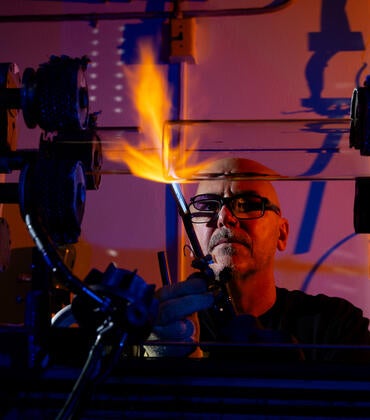Scientists at UC Riverside and Portland State University examined the chemicals and toxicity of ultrasonic cigarettes (u-cigarettes) that generate aerosols by ultrasonication, contrary to conventional e-cigarettes that generate aerosols by heating a coil. In ultrasonication, sound energy is used to stir up particles in a sample.
The researchers found that while manufacturers claim that u-cigarettes operate at lower powers and generate cleaner aerosols, they still contain nicotine, solvents, flavor chemicals, and synthetic coolants similar to e-cigarettes.
“We measured significantly higher levels of toxic aldehydes, including methylglyoxal, formaldehyde, and acrolein, in the u-cigarette fluids, which varied significantly in their transfer into the aerosols,” said Esther E. Omaiye, the first author of the paper that appears in Chemical Research in Toxicology and a postdoctoral researcher in the lab of Prue Talbot, a professor of the graduate division in the Department of Molecular, Cell and Systems Biology. “The cell studies showed that u-cigarettes are either more or less cytotoxic than e-cigarettes.”
Talbot’s lab investigates the evolution, chemistry, and toxicity of emerging tobacco products, including newer technologies like u-cigarettes.
“Although ultrasonication appears to produce less heat logically and, in turn, fewer toxins, in contrast to a heating coil, our data show that SURGE aerosols are either as toxic or more toxic than e-cigarettes,” Talbot said. “The high concentrations of chemicals and aldehydes are contributors to the toxicity as they correlate strongly with the toxicity observed.”
In SURGE u-cigarettes, an ultrasonic vaping chip vibrates at a super-high frequency to split e-liquid into aerosols.
According to Omaiye, while manufacturers can make unsubstantiated claims on product safety, the study makes it clear why regulatory agencies should increase surveillance and enforcement on device evaluation before marketing or immediately after they are in the market.
“The increased levels of aldehydes show a need for users to be cautious of newer technologies that promise to deliver safer aerosols without science-based evidence to back up their claims,” she said.
The research team used gas chromatography/mass spectrometry and multiple cell-based assays to determine the chemical constituents and the effects of the vape fluids and aerosols on bronchial epithelial cells. The team quantified major chemicals in SURGE u-cigarette fluids and aerosols and assessed their cytotoxicity and cellular effects. The researchers evaluated four SURGE u-cigarette flavor variants (“Blueberry Ice,” “Watermelon Ice,” “Green Mint,” and “Polar Mint”).
The research paper is titled “Ultrasonic Cigarettes: Chemicals and Cytotoxicity are Similar to Heated-Coil Pod-Style Electronic Cigarettes.”
Header image credit: SolStock/Getty images.




